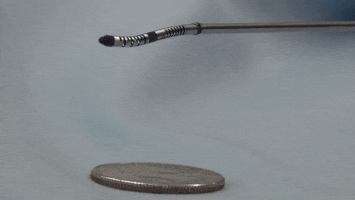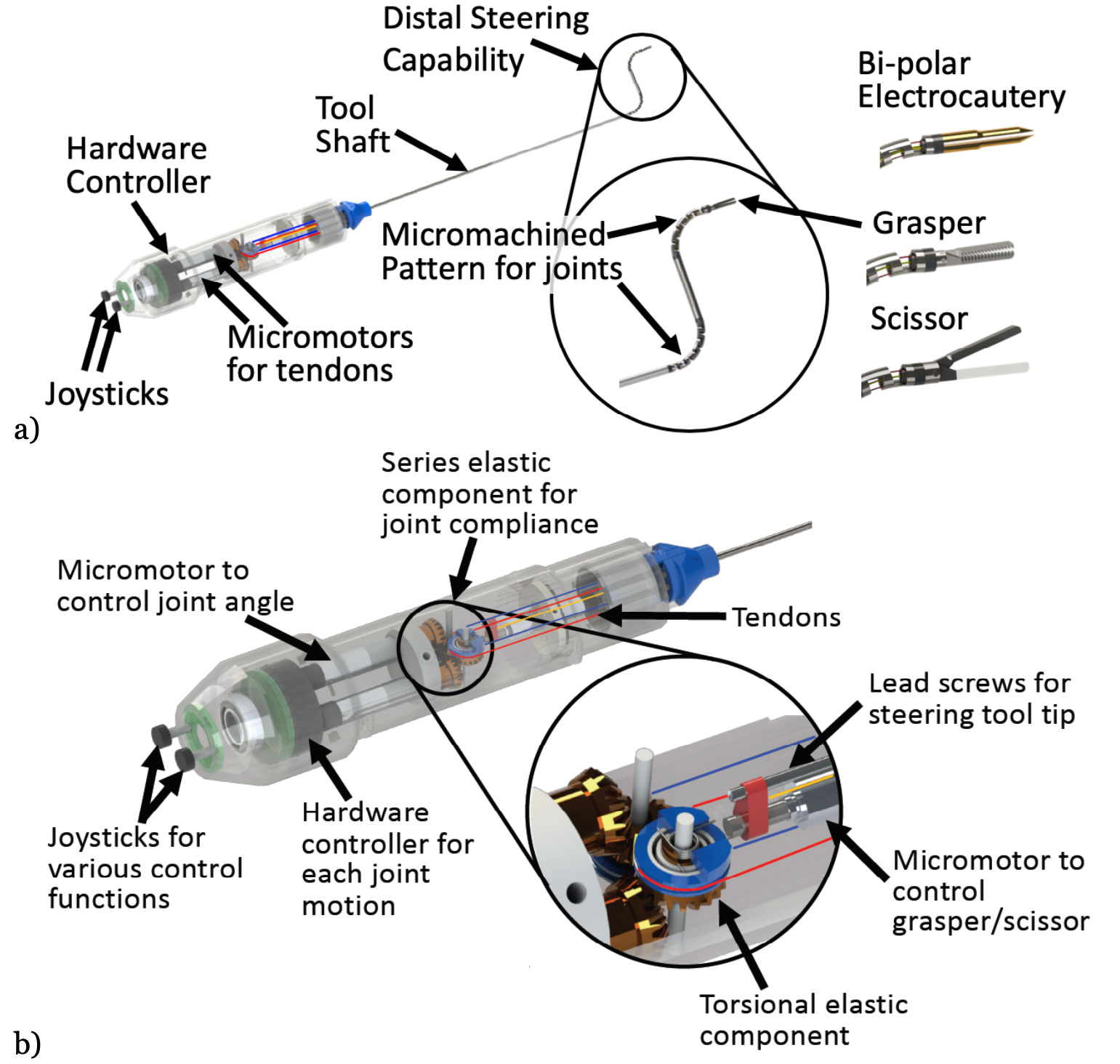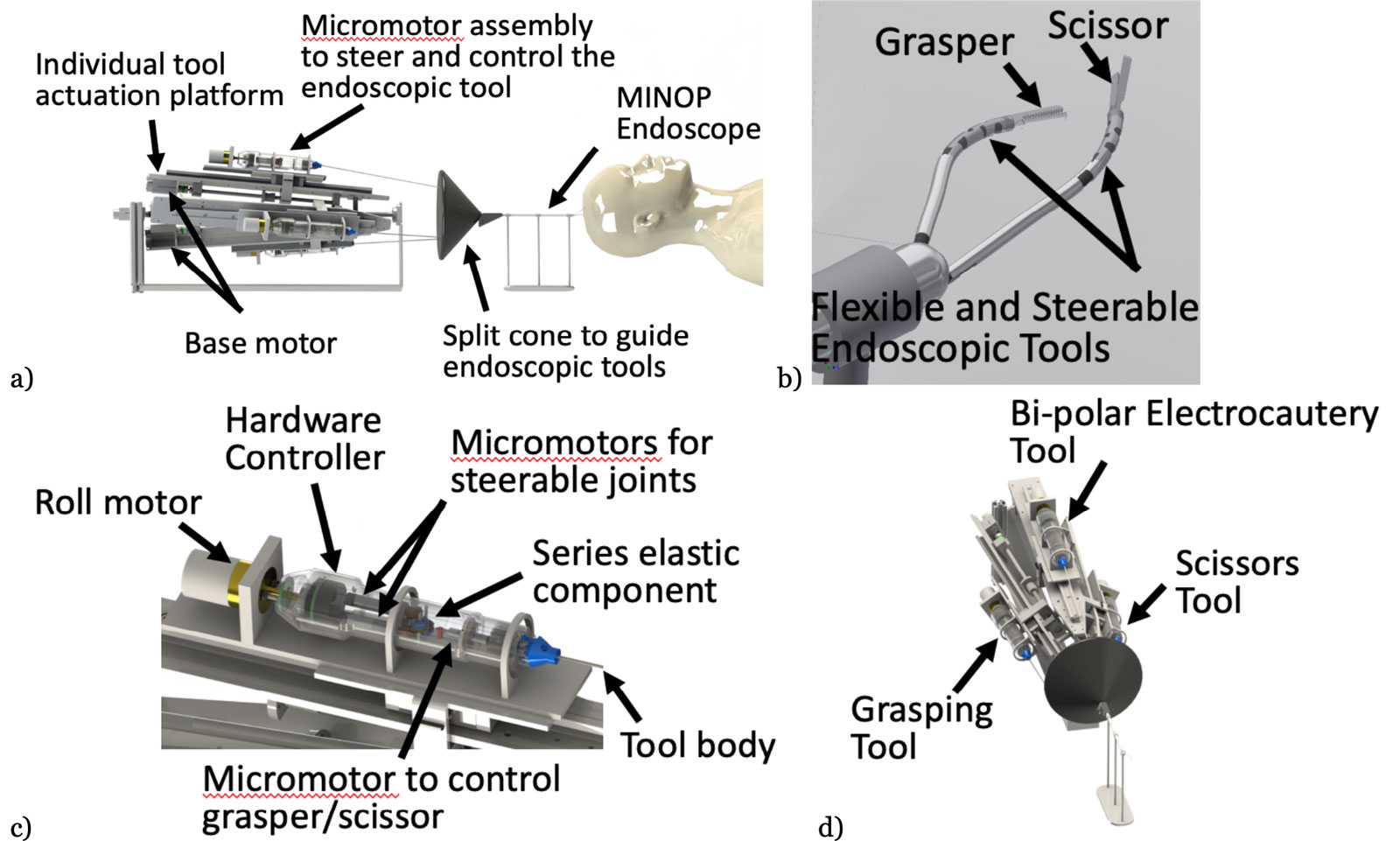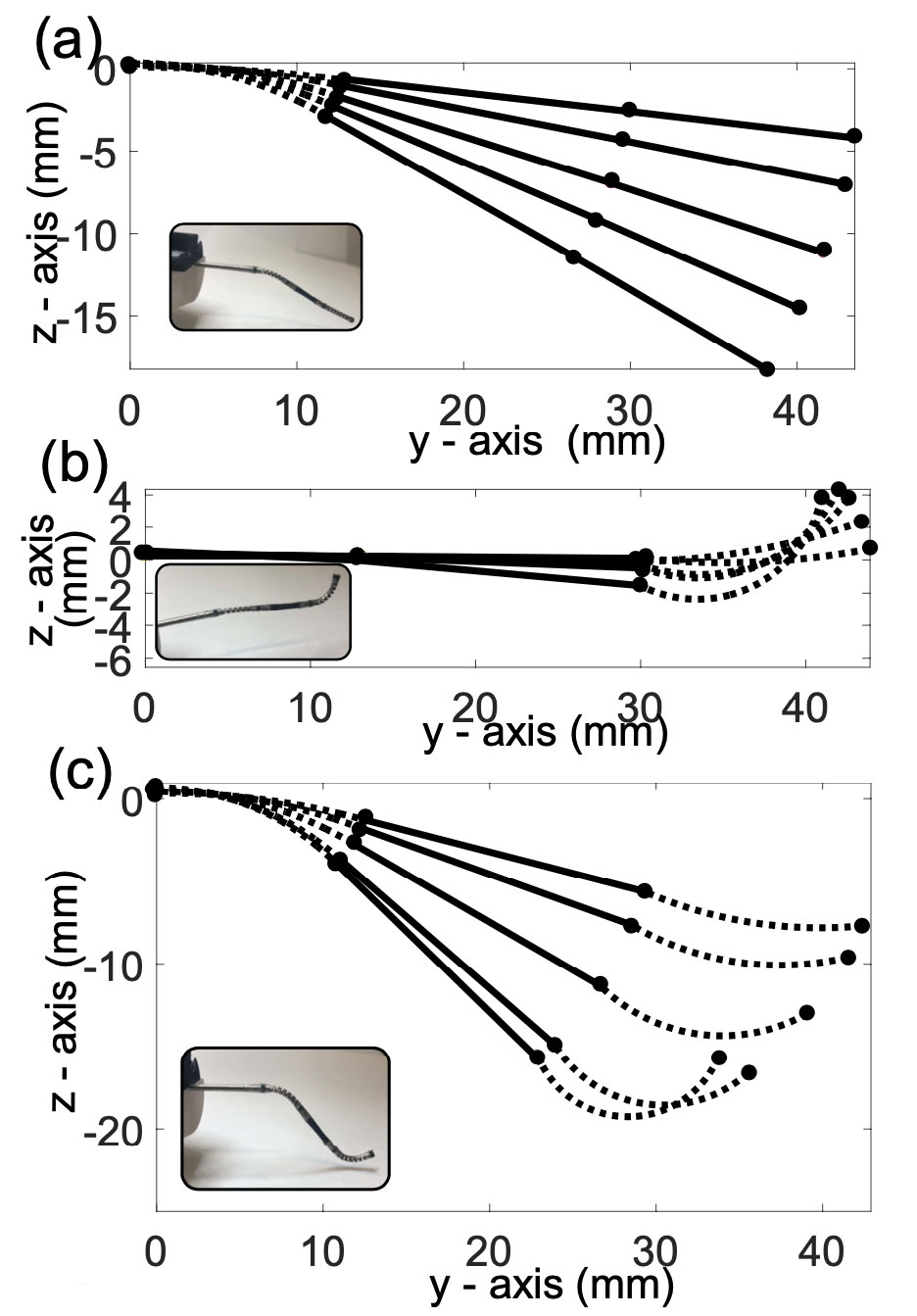This steerable robotic endoscopic tool has multiple degrees of freedom, significantly increasing its maneuverability within the workspace. It includes a turret-based instrument-changing system for automated switching of instruments within the endoscope shaft. The design has the potential to reduce procedure time and increase surgeon dexterity for performing complex procedures. Additionally, the design maximizes joint flexibility of the endoscopic tools, while ensuring visual observation of the tool at all times.
Designed by researchers at Georgia Tech, the tool’s ergonomically designed joystick-type controller gives the surgeon precise control for steering the distal end of the instrument. The device may be used as a single handheld tool or with the turret system to allow for the use of multiple instruments without leaving the surgical field.
The robotic tool and its controller are fully compatible with existing endoscopes used in hydrocephalus cases. This steerable handheld tool may be used in a variety of endoscopic procedures where multiple degrees of freedom are needed while keeping the tool diameter small.
- Flexible: Offers multiple tendon-driven degrees of freedom and is designed to enable the surgeon to avoid obstacles within the workspace
- Simplifies instrument changes: Includes three instrument stations with a motorized shaft to allow insertion into or retraction from the working channel(s) without leaving the surgical field
- Reduces procedure time: Demonstrates potential to improve procedure efficiency and patient safety by reducing procedure time
- Increases surgeon dexterity: Greatly expands the reach and maneuverability of the tool within the workspace, enabling the surgeon to perform more complex procedures
- Ergonomically designed: Can use a joystick interface, enabling comfortable and efficient manipulations in confined workspaces
- Compatible: Works with standard endoscopes
The technology is designed to be used for tool bodies in neuroendoscopy but may be beneficial in any endoscopic procedure where multiple degrees of freedom are needed while keeping the tool diameter small.
Hydrocephalus is a common pediatric disease occurring at a rate of about 0.7 cases per thousand in most developed countries and at an even higher rate in developing countries. This condition occurs due to a buildup of cerebrospinal fluid (CSF) in the brain and leads to enlargement of the ventricles and an increase in intracranial pressure.
Instead of placing a shunt to drain the fluid, more recent treatment has involved brain endoscopic procedures with the purpose of removing the blockage or bypassing the blockage within the brain. One of the most common brain endoscopic procedures is the endoscopic third ventriculostomy (ETV). While this procedure has seen a success rate of over 80% in infants, reaching a suitable location in the third ventricle for penetration in an ETV procedure can be difficult.
The rigid nature of the endoscope requires a linear pathway from the scalp and through the brain parenchyma down to the level of the third ventricular floor. This linear pathway must bypass important blood vessels, functional areas, and cranial nerves to avoid hemorrhaging. Further complicating the issue is that the brain anatomy is often distorted due to the disease process. Because of all these restrictions, finding an optimal linear pathway may not always be possible. Georgia Tech’s steerable endoscopic tool assembly helps surgeons avoid those obstacles for ETV as well as other endoscopic procedures.

Handheld steerable and flexible robotic endoscopic grasper.

Handheld steerable and flexible robotic endoscopic grasper: (a) overall view and (b) close-up view of the various components

Schematic of the three-tool turret-based system: (a) side-view of the robotic tool changing system, (b) close-up view of the flexible end tools, (c) close-up view of the transmission system to facilitate the steering capability as well as the ability to close and open the tool tip (grasper/scissor), and (d) front view of the three-tool changing system

Actuation of the (a) proximal joint, (b) distal joint, and (c) both joints of the tool tip using the hand-held controller for 5 steps of 1 mm each
